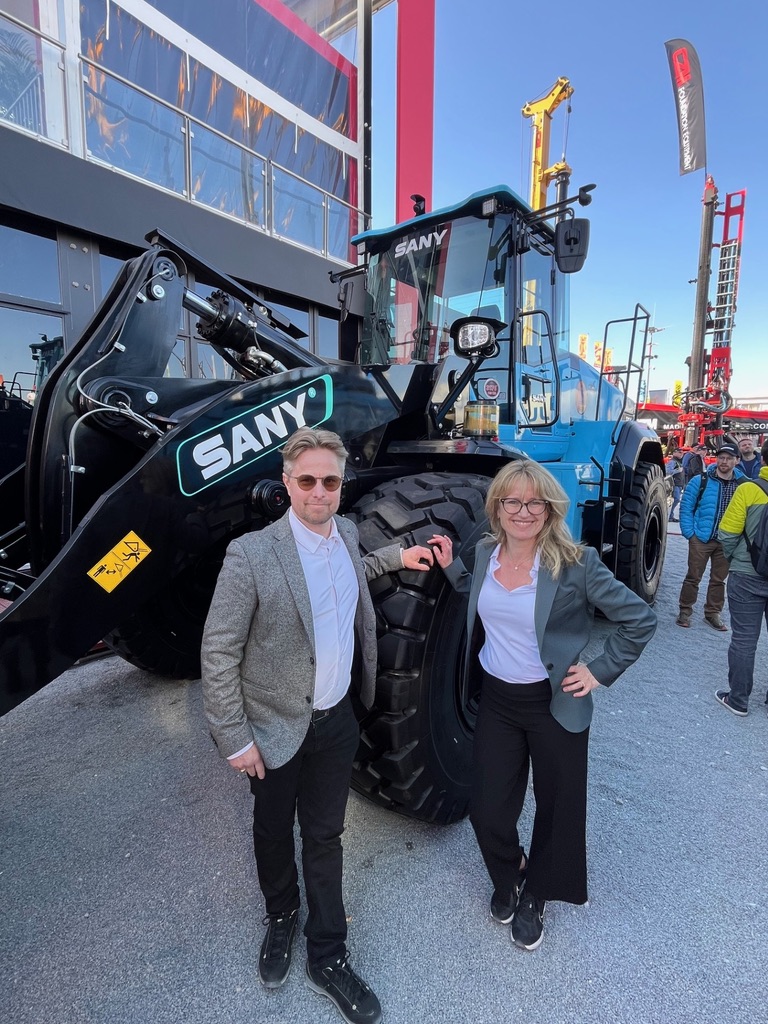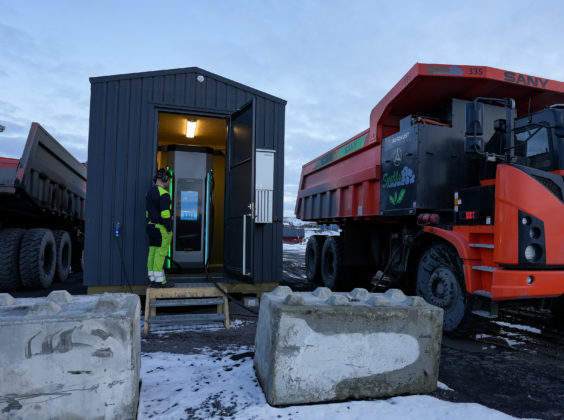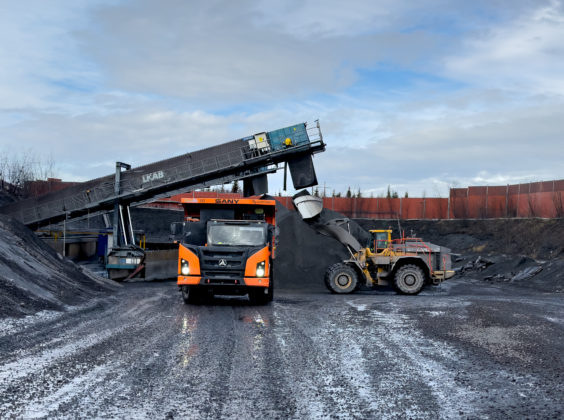In early March, the first two SANY SKT105E battery electric wide body trucks arrived in Sweden from China for deployment at LKAB’s Svappavaara operations with earthmoving contractor Snells Entreprenad AB, supplied by Swedish SANY dealer Nordkust Maskin AB, based in Luleå. They were modified based on Snells experience, some local and site requirements relating to lighting and fire protection; plus all the components checked for CE-certification compliance and Swedish mining industry SWEMIN’s regulation compliance.
IM Editorial Director Paul Moore caught up with Nordkust CTO Johan Gustafsson on what is a significant electric mining equipment project for the whole of Europe. He states: “By mid-March the two trucks went into production following additional training for operators given that they were now working with battery instead of diesel trucks. Once in operation, a lot of information has been gained on the exact regeneration levels on downhill hauls being achieved, so that further adjustments and improvements could be made, including liaising with drivers on how to maximise efficiency.”

Nordkust CTO Johan Gustafsson and Linda Dittrich, COO at bauma 2025
Gustafsson explained that the trucks carry out both uphill loaded hauls and downhill loaded hauls and they carry out two main tasks. One haul takes iron ore that is brought to Svappavaara by rail from Kiruna for blending with the Svappavaara ore. This is stockpiled and blended then the SANY trucks transport their 72 t payload 1.8 km uphill with an elevation of 70 m to the Svappavaara pelletising plant. The other route is taking Svappavaara ore from the Svappavaara processing facility on a 2.5 km downhill haul, losing 70 m of elevation back to the rail spur as it is then transported to Kiruna for blending requirements ahead of pelletising there. There are also other shorter hauling routes that are effectively handled by the SANY trucks. The relative movements of both depend on LKAB’s changing production requirements.
The trucks run 20.5 hours a day but are also charged during the non-working period. During operation additional charging is needed about four times a day if the truck is doing the uphill duty cycle but is only needed every 10 hours for the downhill duty. The battery pack is a CATL 564 kW LFP battery charged with two Siemens SICHARGE D 400kW charging stations located beside the Svappavaara pellet plant. The battery is during test period used until 20% charge level before recharge. These chargers were also supplied by Nordkust as a part of the hauling system.
To date the trucks have moved over 500,000 t with an electricity consumption of approximately 300 MWh and availability of over 98%. Their operation has seen over 250 t of CO2 emissions removed by using electric mining trucks instead of diesel-powered ones. Gustafsson says the machines have delivered according to plan – right from the start. The haulage cycles have taken place on everything from cold winter days to heavy, muddy spring roads and there has been no significant impact on operation or performance despite cold and winter conditions. The direct torque of the electric motors provides smooth and fast acceleration and of course there is an improved working environment – with no noise, no exhaust fumes, no handling of diesel.
He adds: “With all the knowledge we now gained with introducing electric machines, we always start new projects with a feasibility study to have the accurate parameters – power supply, energy limitations, staff planning and a real scanning of road conditions and slopes combined with the needed average tonnes per hour and peak tonnes per hour. This approach helps our clients to understand how to implement electric hauling effectively and see the real impact in terms of lowered cost/tonne and CO2 /tonne.”

He continued: “Snells and LKAB have taken that onboard and adjusted their production planning around the new trucks, so it has worked very well. Long term, the trucks will have much lower maintenance costs and we foresee a lot of potential for more trucks being added not just at this site but other mining and industrial operations across Sweden and elsewhere in Europe.”
Nordkust has a contract with Snells to provide five SANY SKT105E trucks, based on the first two proving their efficiency and performance in operation, which will then be followed by three more in 2026.
Both these machines and other SKT105Es being deployed by Rental Group in Norway are creating a real buzz in the mining market in northern Europe. Gustafsson: “We are seeing huge interest from the whole mining industry in this region. There was a lot of scepticism from people on whether the SANY trucks would perform in the Swedish climate in relation to low temperatures and snow particularly, but they have done so and very well – it is worth remembering they have already been operating in large numbers in China in Inner Mongolia where they get even colder winters than in Sweden.”
The trucks actually have a battery-powered heating system to keep them at the correct operating temperature in cold conditions but in our case this is not often used due to the short nature of the hauls and the heat which is generated during charging. With this type of operation the truck has three states; Operation, Charging or Service. It is never parked in the cold winter without charging as one would do with a car, therefore the battery system performs well in the Arctic climate. In warmer conditions, the batteries and motors used a cooling system which is based on antifreeze.

There has also been scepticism about the wide body truck concept versus rigid trucks in Swedish mining, but the more they are used the more this will change – plus fundamentally the rigid trucks are significantly more expensive. This includes a battery wide body truck being less costly than the equivalent class of diesel rigid truck.
In service and support terms Gustafsson stated: “With this project for Snells and LKAB, we and our engineering team have been through the whole process of shipping the trucks from China, and readying them for the Swedish mining market, then commissioning them and supporting them and training the operators. So we know what is required to ensure our customers get the tonnes and hours they need from the machine. It hasn’t been an easy journey, but now we are there, we think it will be an industry game changer.”
